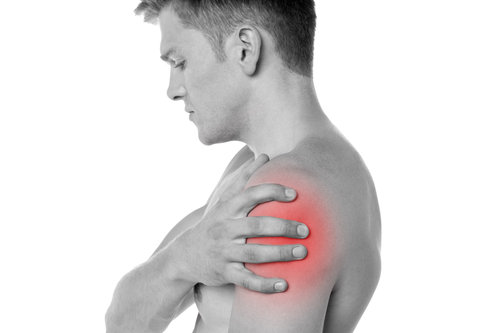The anterior cruciate ligament (ACL) sprain or tear is one of the most common knee injuries. ACL injuries account for almost 35 - 40% of all sporting injuries and can lead to long-term pain and instability. The ACL is the most intriguing structure within the knee which connects tibia (shin bone) to the femur (thigh bone). ACL manages the anterior movement of the tibia and restrains extreme ranges of tibial rotation. ACL also contributes firmness to other movements at the joint including the angulation and rotation at the knee joint. Athletes, who participate in high demand sports like soccer, rugby, basketball etc., are more likely to injure their ACL. The injured persons may require surgery to regain full function of the knee.
The incidence of ACL injury remains high in young athletes’ particularly female athletes while participating in competitive sports. The incidence of ACL tear in female athletes has been found to be 2 to 5 times higher than in male counterparts. Several theories about why women tear their ACL more commonly than men have been proposed. It has been proposed that this is due to differences in Anatomic Differences, Hormonal Differences and neuromuscular control. Other suggested causes include differences in the pelvis and lower extremity (leg) alignment and the effects of estrogen on ligament properties. The most recent research points out the differences in the biomechanics of male and female athletes.
Types of ACL Injuries
Anterior cruciate ligament (ACL) instability is caused by several conditions. These include: sprains, avulsion fractures, ACL deficiencies etc More than half of all injuries to the anterior cruciate ligament occur along with damage to other structures in the knee, such as articular cartilage (bone lining), or meniscus(cushion pad) or other ligaments.
"Sprains" are graded on a severity scale.
Grade 1 Sprains: these are the mildest of the different types of ACL injuries. The ligament is been slightly stretched and no tear exist so it is still able to help keep the knee joint stable. They can usually be treated without surgery.
Grade 2 Sprains: These are the partial tear of the ligament. Some fibers of the ligament are actually tattered, and the joint may feel unstable. In other cases, the joint will feel stable, so not all Grade 2 sprains will need surgery.
Grade 3 Sprains: This type of sprain is the most common types of ACL injuries among athletes. This is referred to as a complete tear of the ligament and the knee joint will be unstable. Grade 3 sprain symptoms are frequently more severe. Most ACL injuries are complete or close to complete tears. Reconstructive surgery is usually recommended for this particular grade of injury, once a full extension is achieved and the swelling decreases
ACL Avulsion Fracture: ACL avulsion fracture is rarer than an ACL sprain, and occurs when the ACL tears by breaking a piece of bone off from where the ligament attaches to the leg or thigh. In most cases, it’s the tibia (leg bone) that is affected (tibial eminence avulsion fracture). This is usually muscular contraction and the result of overuse during sports. ACL avulsion fractures are more common in kids than in adults. These are quite common in skiers. This type of injury is caused by direct trauma through a blunt force or hit.
ACL Deficient Knee: Knees that do not have an anterior cruciate ligament are unstable and instability results in unwanted, ongoing symptoms for patients. While patients can live with ACL deficiency by decreasing activity, this can lead to anterior laxity, rotatory instabilities, and meniscal tears. Ultimately, this can lead to the onset and progression of osteoarthritis. Consequently, surgery is usually recommended for younger persons, active patients, or patients who live in regions or have occupations which require walking uphill or on uneven ground or even climbing.
Symptoms
When you injure your anterior cruciate ligament, you might hear a loud "pop" or a "popping" sensation in the knee and you may have a feeling of instability or "giving way" with weight bearing. Other typical symptoms include:
- Knee swelling: Within 6 hours, your knee will swell with pain. Your knee will be unstable and there is the risk of causing further damage to the meniscus (cushioning cartilage) of your knee.
- Knee hyperextension: Some people feel a brief hyperextension of the knee joint which occurs when the knee is bent backward.
- Loss of full range of motion
- Tenderness along the joint line
ACL reconstruction - when it is needed?
Most cases of ACL reconstruction surgery are performed arthroscopically these days. ACL repair surgery typically is used only in the case of an avulsion fracture.
Orthopaedists are more likely to recommend arthroscopic ACL reconstruction when:
- Young patients or athletes who are at considerable risk for disability or further knee injury (if normal knee mechanics are not restored).
- The patient has exhausted non-surgical treatments, such as physical therapy, and is still having frequent problems with instability.
- The episodes of instability are a significant problem for the patient and inhibit their ability to perform daily activities or job-specific requirements without assistive devices (such as a cane, crutch or walker).
- There are injuries to other knee structures
Arthroscopic ACL reconstruction
Most people have general anesthesia right before surgery. Local anesthesia or a block may also be used for this surgery. Some orthopaedists believe that surgery should be done after the swelling goes down and when patients have regained a range of motion in the knee.
- Tissue transplanted from your own body is called an autograft. The two most common places to take tissue from are the hamstring tendon or knee cap tendon (patellar tendon). Tissue graft taken from a donor is called an allograft.
- There is not one ideal graft that works for every patient. Graft selection are individualized for each patient based on the merits and demerits of the graft type, as well as the patient’s age, activity level, lifestyle and any other associated injuries.
- The ACL reconstruction is usually performed with the help of knee arthroscopy. Through a small surgical cut, a tiny camera is inserted into the knee. The video monitor in the operating room will receive the feed from the camera. Your surgeon will utilize the camera to check the ligaments and other tissues of your knee.
- Your surgeon will make other small cuts around your knee and insert other medical instruments (such as scissors or lasers). He will fix any other damage found.
- The torn ligament will be removed. The surgeon drills sockets or tunnels for the new ACL into the tibia (shinbone) and femur (thigh bone) through which the graft will be anchored.
- If your own tissue is being used to make your new ACL, your surgeon will make another incision in the knee and take the graft (replacement tissue).
- The graft is pulled through the tunnels that were drilled and your surgeon will attach the new ligament to the bone with screws or other devices to hold it in place. As it heals, the bone tunnels fill in and this holds the new ligament in place.
- At the end of the surgery, your surgeon will close your incisions with stitches, tape, or staples. The new graft becomes a living ligament in your knee after some time.
- Arthroscopic ACL reconstruction cannot be used as a quick fix. The surgery will be followed by months of rehab and physical therapy to build up the strength and stability of the knee and retrain proprioceptive function.
Advantages of Arthroscopic ACL reconstruction
Since it is minimally invasive, arthroscopic ACL surgery offers many benefits to the patient over traditional surgery. These include:
- It can be done together with diagnostic arthroscopy (using arthroscopy to find out about the injury or damage to the knee).
- Less bleeding during surgery
- Less scarring
- Smaller incisions than open surgery
- Faster recovery and more comfortable rehabilitation

Kasturi Multispeciality Hospital located in Secunderabad is a multi-specialty hospital offering a wide spectrum of advanced medical treatments to its patients. Kasturi Multispeciality Hospital has state-of-the-art infrastructure and a great team of qualified doctors available around the clock and for emergency services. The Hospital also has specialties such as Gynaecology, Obstetrics, Orthopaedics, Paediatrics, Cardiology, Diabetology, Endocrinology, Medical gastroenterology, Nephrology, Dermatology & Physiotherapy. Kasturi Multispeciality Hospital offers effective and well advanced orthopedic treatments in Hyderabad which includes
ACL reconstructions surgery in India, under the guidance of Dr. M.V. Sushanth. The Expert Orthopaedic specialist Hyderabad in telangana provides treatment for all types of joint pains and
Knee ligament injury treatment.
.
Mail Us : kasturihospitals2014@gmail.com




















